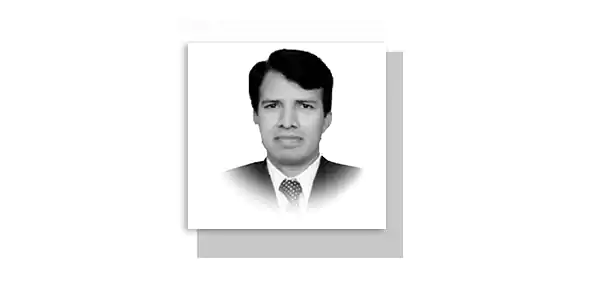Analysing strategic vision of Saudi Crown Prince
Whereas the Saudi Vision-2030 was conceived by King Salman and Crown Prince Mohammed Bin Salman (MBS) for transformation of social and economic policies of the Kingdom, the subsequent developments in the Middle East has opened new avenues for the strategic re-orientation of the region. The latest episode of this strategic re-orientation of the Middle East is rapprochement between Kingdom of Saudi Arabia and Islamic Republic of Iran. This is being seen as a great breakthrough in the political, strategic, social and economic dimensions of the Middle East. Though apparently Chinese leadership played a mediating role towards reorientation and reconciliation of Saudi-Iran relationship, but behind the scene, Crown Prince Mohammed Bin Salman has played the decisive role in this rapprochement for a larger interest of the Middle East.
With this strategic re-orientation, it is perceived that Middle East will move towards a transformed and greater political unity, social harmony, economic integration and security cooperation. At a very young age, Mohammed Bin Salman (MBS) conceived the Saudi Vision-2030 under guidance of his father King Salman bin Abdul Aziz Al Saud. The primary focus of this vision was a broader transformation of Saudi economy towards on diversified sources of national income. Until recent past, the Saudi economy was mainly based on oil exports. The young and dynamics leadership of MBS critically analyzed this single source economy and decided to bring diversification in the economic outlook of Kingdom. This economic dynamism was based on two factors; a) the people centric approach where every citizen of the Kingdom become economically prosper and contribute for their families and respective areas and b) evolving a sustainable economic model for the state (Kingdom) to compete the emerging economic challenges posed by globalization and economic war between US and China. While the Saudi Vision was released, there came critics about the achievement of the goals set in it. With a passage of time, the experts of economy and international politics felt that, the vision is not only attainable but, it will serve as a broad outline for political and strategic objectives. Until the launching of Saudi Vision 2030, the socio-economic and socio-political structure of the Kingdom was based on traditional mode of progress which MBS felt is static, less vibrant and non-progressive. Indeed, he envisioned it as not in line with the changing international environment thus decided to break the statuesque at three levels: a) re-orientation of Saudi social set-up to form a vibrant Saudi society with urbanism, culture and entertainment, sports, Umrah, UNESCO heritage sites and better life expectancy, b) to support such a vibrant society, it was considered essential to have a thriving economy of the Kingdom where there are job opportunities for everyone including women as the workforce, international competitiveness, Public Investment Fund, foreign direct investment, non-oil exports, and c) to run all this effectively, a change at governmental level was perceived where an ambitious national agenda was conceived with non-oil revenues, government effectiveness, e-government, household savings and income, non-profits, and volunteering.
While the domestic restructuring is at its advance phase in the Kingdome under MBS, there is regional and global dimension of the vision. The regional and global dimensions are both geo-economic and geopolitical. Regionally, entire Middle is passing through a intermittent phases of intra-state and inter-state conflicts. Indeed, there is hardly a state in the broader Middle East including North Africa which is free from conflict. These conflicts and infightings may have their local origins yet highly inspired by the international power politics. The major powers have made this region as the testing ground for playing their power politics ever since the end of World War-II.
In the post 9/11, militancy and terrorism has been promoted widely by external powers to advance their vested interests. In the garb of militancy and terrorism external powers have largely concentrated their militaries with latest weaponry for physical control of the region. These powers provoke and promote the existing fault-lines at intra-state and inter-state level and then exploit these states for taking-away their economic sources and making use of their geopolitical locations against their rival powers. The war in Iraq, Syria, Libya, Yemen and other instabilities in the region have their strategic and economic reasons. While these major powers and strategic rivals follow the policy of divide and rule, there emerge more enmities and conflicts between regional states based on narrow ideologies, tribalism and civilizations. The policy of divide and rule is at its peak in the Middle East. Turkey raised these issues, but it was economically strangulated and its leadership was tainted under various phases of exploitation. Mohammed Bin Salman has envisioned and analyzed the strategic dimensions of the challenges, facing the Middle East at large. The steps taken by MBS in the recent past is a great breakthrough towards a larger regional unity and socio-political integration at three levels; a) social harmony and cohesion for promotion of people to people contact, b) political reconciliation among the leadership of regional countries, c) economic cooperation for enhancing trade within the region and d) ending the existing conflicts in the region by reducing the very cause of conflicts. The process of bringing an end to these conflicts has already started in the Middle East. He has clearly understood the root-causes and conspiracies behind these clashes and conflicts. The modalities are being worked-out for a larger peace and economic prosperity of the region. Nevertheless, the global players have also intensified their game-planes; Sudan is a very recent example of international power play.
The Muslim world must stand with the Kingdom of Saudi Arabia for the larger unity among Middle Eastern states. Indeed, Mohammed Bin Salman is being viewed as a strategic, progressive and visionary leader who can undertake the gigantic task of uniting the Middle East in particular and Muslim world in general.
— The writer is Professor of Politics and IR at International Islamic University, Islamabad.
Email: [email protected]









